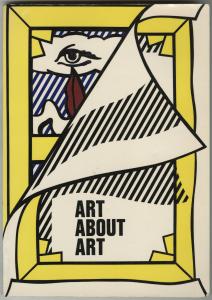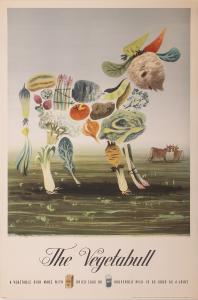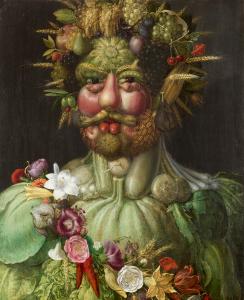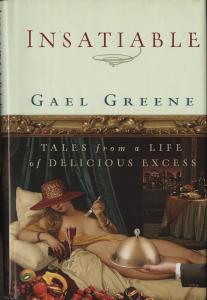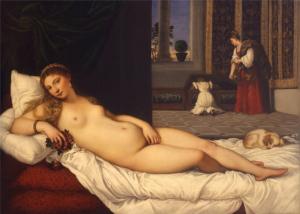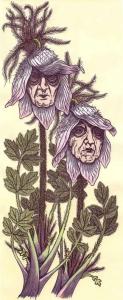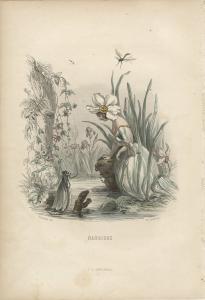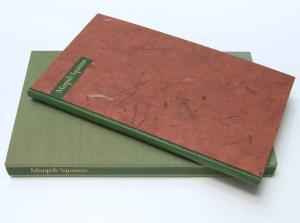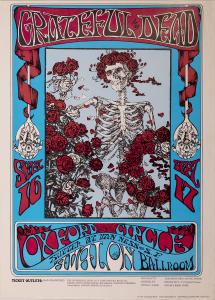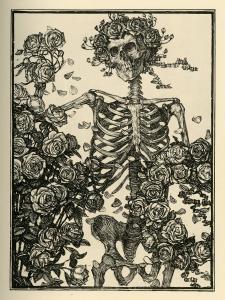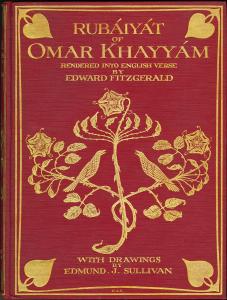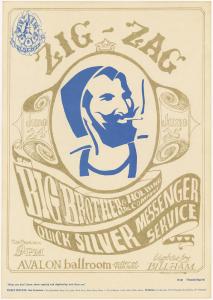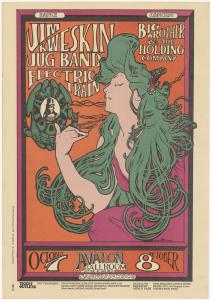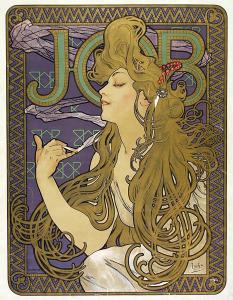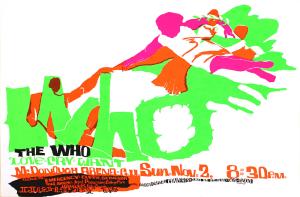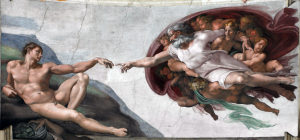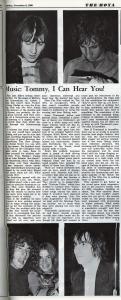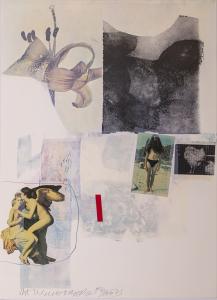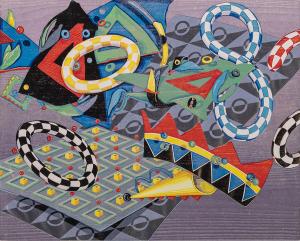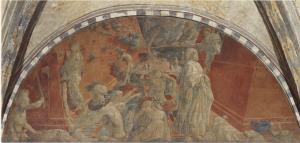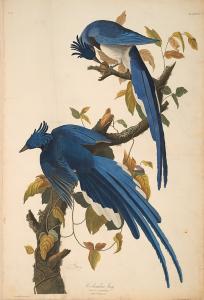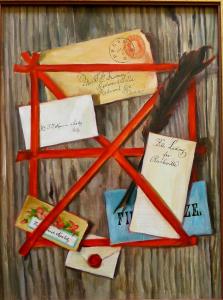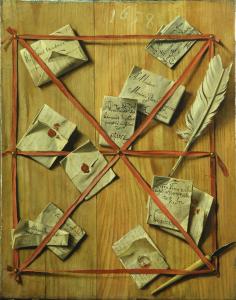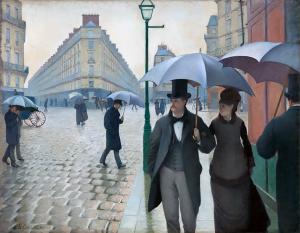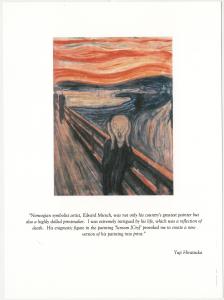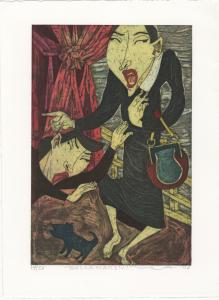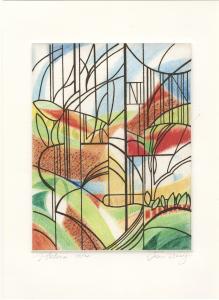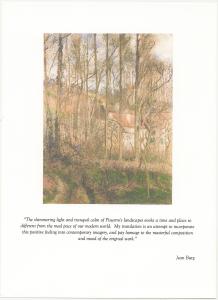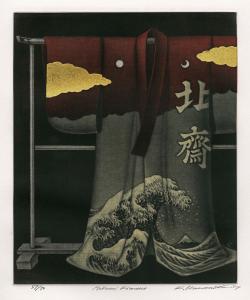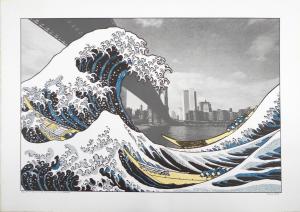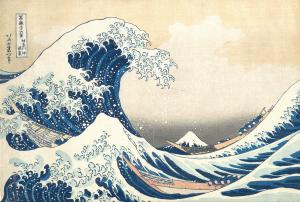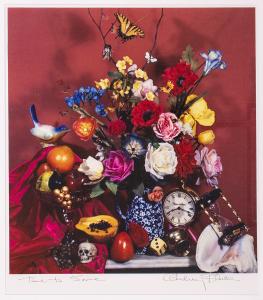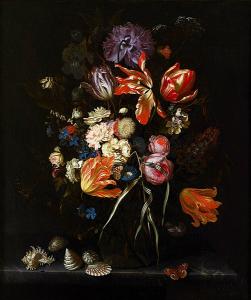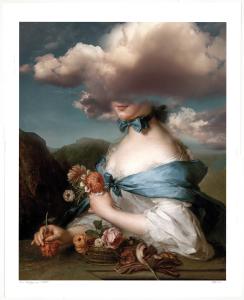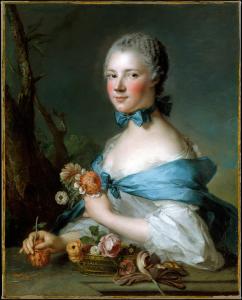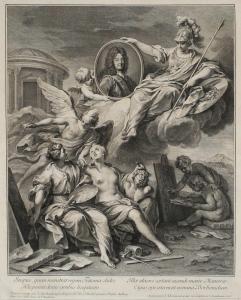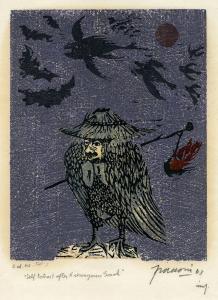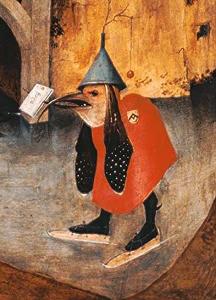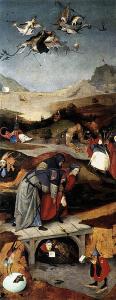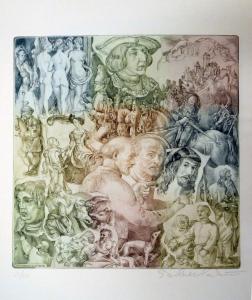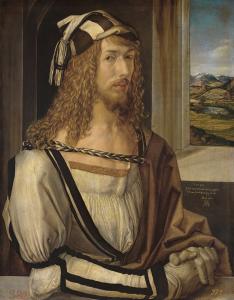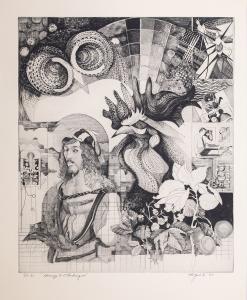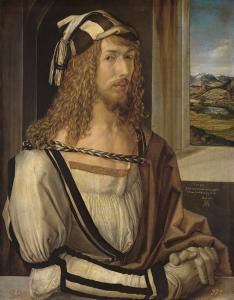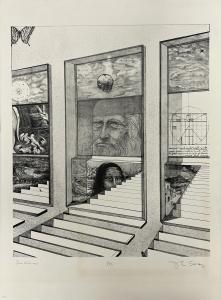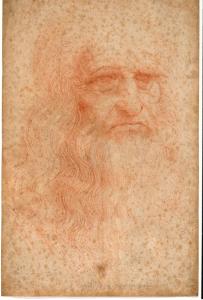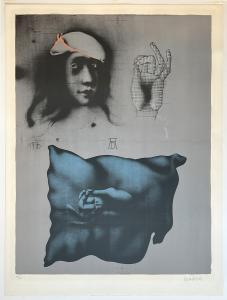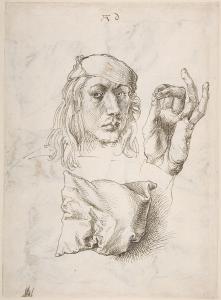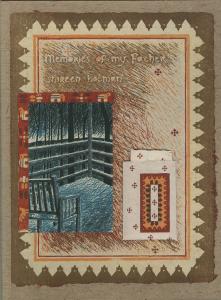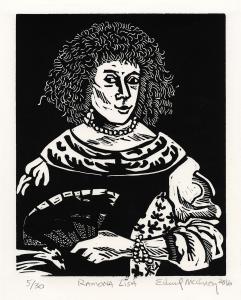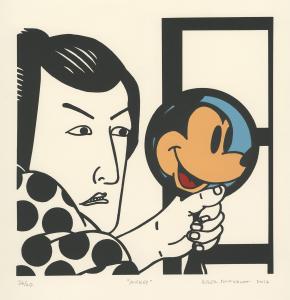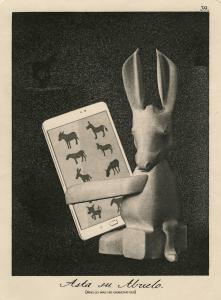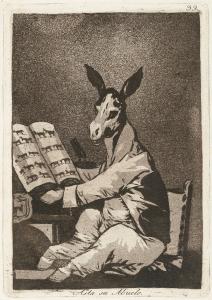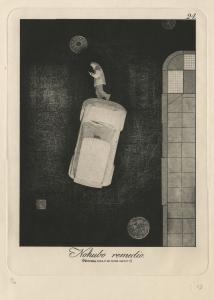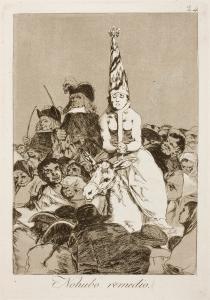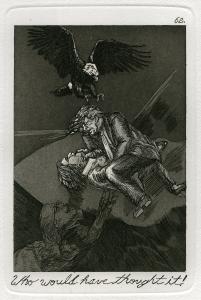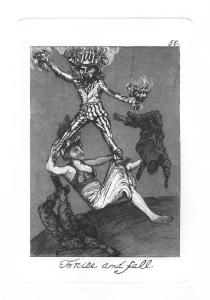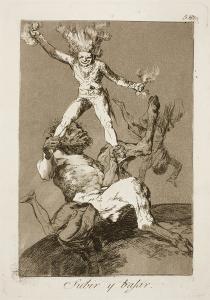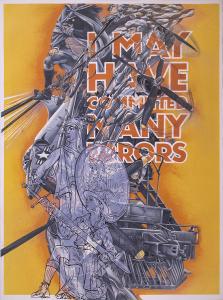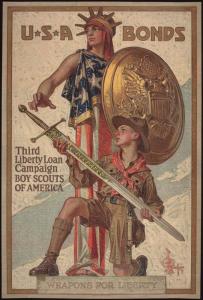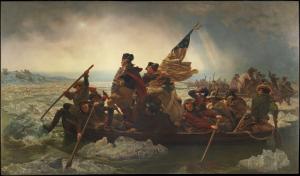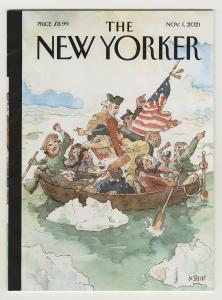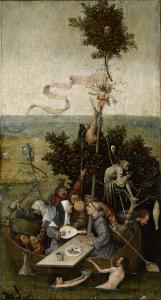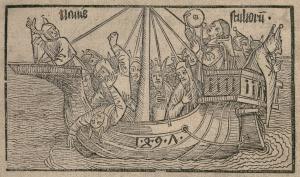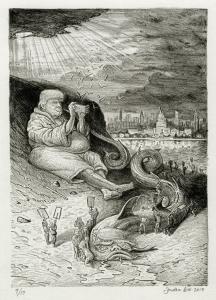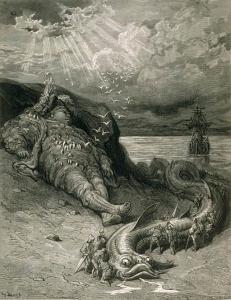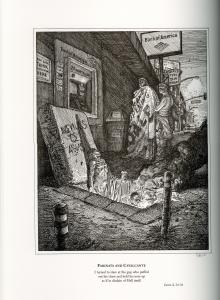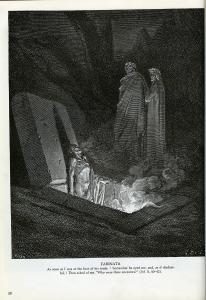This exhibition brings together a wide range of graphic art inspired by well-known artworks, artists, or a pivotal figure in an artist’s life. Most artists have a favorite predecessor or artistic movement they particularly identify with. This can be manifested in the re-use of imagery or the adoption of a distinctive style developed by an earlier artist. Some artists portray themselves in the guise of a favorite painter. Others may incorporate a famous artwork in a new context. Artists begin their training by studying and copying from masterworks of the past, learning principles of style, composition and technique through emulation. As the French Neoclassical painter Jean-Auguste-Dominique Ingres advised his pupils,
“Address yourselves to the masters, therefore, speak to them, they will answer you, for they are still living. It is they who will instruct you; I myself am no more than their quiz-master.”
The effect of borrowing and interpretation creates an engaging visual dialogue with multiple layers of meaning. The iconic images recognizable in these prints serve as a common point of reference from which artists engage in contemporary issues, reflections and perceptions of reality. Art of Homage is arranged into four sections exploring advertising and book arts; appropriation; tributes; and satire and social commentary. As with other artforms visual art is not created in a vacuum, as the creative process is built upon the works of previous generations.
Art About Art
Jean Lipman and Richard Marshall
E.P. Dutton, New York, 1978
Anonymous loan
This book was published to coincide with the 1978 Whitney Museum of American Art exhibition of the same title. As explained on the reverse cover, “Since mid-century there has been an increasing number of works by contemporary American artists that take as their subject other works of art. This book and the accompanying exhibition at the Whitney Museum of American Art in New York present, for the first time, an isolated and in-depth survey of this phenomenon…”
Advertising & Book Arts
The Vegetabull
Lewitt-Him Studio (1933 – 1955)
Thomas Forman & Sons Ltd., printer
H.M. Stationery Office, publisher
1943
Lithograph on paper
Fairchild Endowment Fund purchase
2019.10.1
Inspired by Giuseppe Arcimboldo, Rudolf II of Habsburg as Vertumnus, 1591
Skokloster Castle, Sweden
Image source
This fanciful poster was designed by Polish artists Jan Le Witt and George Him, who met as students of graphic design in 1933. They teamed up to establish a printing studio, and in 1937 moved their business to London following an exhibition of their work at the publishers Lund Humphries. During World War II the Lewitt-Him Studio received important commissions from agencies such as the General Post Office and the Ministry of Information. The Vegetabull is a clever arrangement in the tradition of the composite portraits by Giuseppe Arcimboldo, who portrayed his patron Rudolf II in the guise of the Roman god of the seasons, with features consisting of vegetables. The clever Lewitt-Him illustration of a bull formed from vegetables was designed to encourage the British wartime public to consume dairy and produce when meat was in short supply.
Insatiable: Tales from a Life of Delicious Excess
Gael Greene (1933 – 2022)
New York: Warner Books, 2006
Anonymous loan
L.2022.4.7
Inspired by Titian, Venus of Urbino, 1538
Gallerie degli Uffizi, Florence
Image source
Gael Greene, a pioneering food writer and award-winning restaurant critic for New York Magazine, published this lively and humorous account of her four-decade career in 2006. Greene, who began her weekly column in 1968, is recognized as an innovator in the culinary writing genre. She would typically use disguises when eating at restaurants and favored provocative titles to her reviews. She also co-founded with chef James Beard the nonprofit Citymeals-on-Wheels in 1981 to provide meals for elderly, mobility challenged residents of New York.
Mimpish Squinnies: Reginald Farrer's Short Guide to Worthless Plants
Abigail Rorer (b. 1949)
Design and text printed by Michael Russem
Petersham, MA: Lone Oak Press, 2008
Wood engraving on paper
Edition: 30 regular with 10 deluxe
Fairchild Endowment Fund purchase
2009.19.1.0
Compared with J. J. Grandville, Narcisse, from Les Fleurs Animées, 1867
Anonymous loan
Abigail Rorer purchased a wood engraving by Leonard Baskin in high school and soon became enchanted with the medium. Through a meeting with the prominent wood engraver Barry Moser, she was encouraged to practice and continue looking at the works of other practitioners of the medium. Rorer completed a bachelor’s degree in printmaking at Rhode Island School of Design and in 1989 founded the Lone Oak Press to produce her fine book editions.
Mimpish Squinnies is a humorous response to the writings of Reginald Farrer (1880-1920), a prolific British naturalist who wrote about rock gardening and alpine plants. The title borrows from Farrer’s vocabulary of invented words to describe plants that he felt less than enthusiastic about. The suite of 15 relief engravings accompanying Rorer’s text bear similarities with the anthropomorphic flowers of Les Fleurs Animées (Animated Flowers, or Flowers Personified), by the influential French satirist and illustrator Jean Ignace Isidore Gérard, known as Grandville. The first edition was published a year after his death in 1846.
The Grateful Dead, Avalon Ballroom
Alton Kelley (1940 – 2008)
Stanley Mouse (George Stanley Miller) (b. 1940)
1966
Commercial/offset printing on paper
Anonymous loan
L.2022.4.6
Inspired by Edmund Joseph Sullivan, The Rubáiyát of Omar Kháyyam
Rendered into English verse by Edward Fitzgerald with illustrations by Edmund J. Sullivan (New York: E.P. Dutton & Co., first published 1913).
Art Collection purchase
2019.16.1
The heyday of classic rock bands performing in the counterculture movement of 1960s San Francisco initiated a new genre of psychedelic posters and handbills that came to define the aesthetics of the time. Alton Kelley and Stanley Mouse created posters for Family Dog productions under the leadership of Chet Helms. Their iconic poster for the Grateful Dead’s performance at the Avalon Ballroom in the Polk Gulch neighborhood featured a skeleton with roses taken directly from an illustration for The Rubáiyát of Omar Kháyyam, a popular book of 11th-century Persian verses. The edition was published in London in 1913 with illustrations by E.J. Sullivan.
According to David Browne in Rolling Stone Magazine (March 4, 2022), Kelley and Mouse found the book in a local library and cut the illustration out with a penknife. Back at their studio they copied the image using a precursor to the xerox machine. Mr. Mouse colored it in and added the fluid lettering. The resulting poster became part of the band’s visual identity. It was featured on the cover of their 1971 live album and became their official logo.
Big Brother and the Holding Company, Avalon Ballroom
Alton Kelley (1940 – 2008)
Stanley Mouse (George Stanley Miller) (b. 1940)
1966
Commercial/offset poster on paper
3rd printing
Fairchild Endowment Fund purchase
2015.49.5
Inspired by Maurice and Jacques Braunstein, Zig-Zag brand rolling papers, 1879
In this poster for Big Brother and the Holding Company and the Quicksilver Messenger Service, Alton Kelley and Stanley Mouse incorporated the design from the French Zig-Zag rolling papers company. The June 24-25, 1966 concert announced on the poster is believed to have been the first at which Janis Joplin performed with Big Brother and the Holding Company.
The Zig-Zag cigarette paper company was established in 1855 in Paris by the brothers Maurice and Jacques Braunstein. Its name refers to their patented design: a dispenser from which the rolling papers formed a “Z” like pattern when they are released. Their logo features the image of a legendary Zouave soldier among the light infantry regiments of the French Army. At the Battle of Sevastopol (1854-55), fought during the Crimean War, the soldier’s clay pipe was shot and shattered by enemy gunfire. Out of necessity he decided to try rolling some tobacco using the paper torn from a musket cartridge and in so doing inaugurated cigarette rolling papers.
The same design was featured on the 1992 debut studio album The Chronic by the disgraced and controversial American rap singer Dr. Dre. The album’s title is derived from a slang term for cannabis.
Jim Kweskin Jug Band, Avalon Ballroom
Alton Kelley (1940 – 2008)
Stanley Mouse (George Stanley Miller) (b. 1940)
1966
Commercial/offset poster on paper
3rd printing
Fairchild Endowment Fund purchase
2015.49.7
Inspired by Alphonse Mucha, poster for JOB rolling papers, 1898
Victoria and Albert Museum, London
Image source
The artists of the 1960s rock music posters were inspired by the distinctive designs of the late 19th-century Art Nouveau style. Its leading artist was the Czech-born Alfonse Mucha, who settled in Paris in 1888. His poster of French actress Sarah Bernhardt in the role of Gismonda (1895) inaugurated a new graphic style favoring the feminine form depicted in fluid lines with flowers and natural elements. Perhaps his most famous poster, JOB, featured a similar Byzantine inspired border as the Bernhardt poster. JOB is the trade name of the Joseph Bardou Company, manufacturers of cigarette papers. In Mucha’s advertisement, the emphasis is on the female figure and her abundance of swirling hair, which draws attention away from the cigarette in her hand. The poster was very popular and re-issued in a variety of formats for Mucha’s international clientele.
The Who Concert Poster
Luther McKinley Stovall (1937 - 2023) in cooperation with Di Stovall, Mike Schreibman, and David Bronson
1969
Screenprint on paper
Gift of the artist
2011.18.5
Inspired by Michelangelo, The Creation of Adam, ca. 1511
Vatican Museums (Sistine Chapel), Rome
Image source
One of the leading British rock bands of the 1960s, The Who, performed at McDonough Gymnasium in November 1969. They had played at the Woodstock music festival in August and were on a national tour to promote their album Tommy, the world’s first rock opera. Lou Stovall created numerous silkscreen posters for events and concerts in Washington, D.C. in the pop psychedelic aesthetic. His ingenious design for The Who blends fluid lettering and fluorescent colors with imagery from Michelangelo’s Creation of Adam mural on the ceiling of the Sistine Chapel.
Appropriation
Untitled [Brademas]
Robert Rauschenberg (1925 – 2011)
Styria Studio, Inc. publisher
1973
Screenprint/serigraph with collage on paper
96/250
Gift of Herbert Sanborn
1111.1.6587
Inspired by François Gérard, Psyche and Amor, also known as Psyche Receiving Cupid's First Kiss, 1798
Musée du Louvre, Paris
Image source
This poster was dedicated to John Brademas, a United States Representative from Indiana from 1959-1981 and a prominent advocate for the arts. He also served as the president of N.Y.U. from 1981-1992. Brademas supported important legislation for the arts as chief sponsor of the 1975 Arts, Humanities and Cultural Affairs Act and the 1976 Museum Services Act. He owned paintings by leading artists such as Robert Rauschenberg, Milton Avery, Hans Hofmann and Robert Motherwell. Rauschenberg, who attended events on Capitol Hill hosted by Brademas and was friendly with the congressman, created this poster to benefit his campaign for re-election in 1973.
Uccello's Ring
James P. Monson (b. 1943)
1994
Woodcut printed in colors on Misumi Japanese paper
14/80
Art Collection purchase
2001.16.2
Inspired by Paolo Uccello, The Flood, 1447-48
Santa Maria Novella, Florence
Image source
Jim Monson, a teacher of printmaking who studied with the notable Stanley William Hayter at Atelier 17, created a pair of color woodcuts in honor of the early Renaissance painter and mathematician Paolo Uccello. The print that accompanies this one is titled Uccello’s Geometry. Uccello was fascinated with the science of vanishing point perspective and made significant inroads towards development of the technique in two dimensions. This colorful woodcut incorporates some of the vibrant energy of Uccello’s famous panels of the Battle of San Romano (ca. 1435-1455), created for the Palazzo Medici in Florence.
The motif of the checkerboard ring is taken from Uccello’s mural panels depicting the Biblical story of the flood. These paintings decorating the Church of Santa Maria Novella in Florence are hailed for their close approximation of vanishing point perspective. In Uccello’s Ring, Monson translates Uccello’s geometrical forms into an abstraction of three-dimensional shapes and color in space.
Audubon March
Jane Goldman (b. 1951)
Stewart & Stewart Fine Art, publisher
2015
Archival pigment print with hand coloring
6/25
Art Collection purchase
2015.47.1
Inspired by John James Audubon, Birds of America, Plate 96: Columbia Jay, 1827-1838
Image source
Jane Goldman is co-owner and director of Mixit Print Studio in Somerville, Massachusetts. Her artwork is devoted to the world of flora and fauna and effects of natural light. Audubon March is from a suite of 14 prints inspired by her love of books and admiration for the 19th-century ornithologist John James Audubon. Her series of prints create a contemplative world in which the shadows cast on the pages of Audubon’s Birds of America seamlessly unify the past with the present.
Family Souvenirs
Marguerite Elizabeth Kumm (1902 – 1992)
1966
Oil on board (wood)
1992.2.1003
Inspired by Wallerant Vaillant, Letter Rack with Letter, 1658
Staatliche Kunstsammlungen, Dresden
Image source
Marguerite Kumm was born in Redwood Falls Minnesota and later moved to northern Virginia in the Washington, D.C. area. She obtained a master’s degree from the Corcoran School of Art and worked as a commercial illustrator. Kumm was fond of studying Old Master paintings and learned much of her figural technique from copying the works of Diego Velázquez.
This oil painting is in the 17th-century trompe l’oeil tradition which means to “fool the eye.” The style was popularized in 19th-century America by artists such as William Harnett and John Frederick Peto. The subject of Family Souvenirs and its prototype by the Dutch painter Wallerant Vaillant is a letter rack. The envelope at the top appears to be an old piece of correspondence from Dresden addressed to one of Kumm’s relatives, perhaps her father or grandfather.
Rainy Day, Chicago
Dario Zucchi (b. 1938)
2011-2017
Digital print
Gift of Eric Denker in honor of the artist
2017.8.7
Inspired by Gustave Caillebotte, Paris Street; Rainy Day, 1877
Art Institute of Chicago
Image source
Dario Zucchi, an Italian artist living in Washington, D.C., has devoted years to the study of visitors to an art museum, notably the National Gallery of Art where his wife has worked as a docent, and elsewhere. Zucchi waits until he sees an interesting spontaneous overlap between a visitor and the artwork they are looking at. After asking their permission, the artist takes carefully framed images that often have an ironic or humorous undertone.
With his dark jacket, hat and umbrella, the viewer in this photograph fills an open space in the lower left of the original painting by Gustave Caillebotte, blending in seamlessly with the canvas before him.
Translations: the reproductive print re-interpreted in the twenty-first century
Sherry Smith Bell, Jean Burg, Ann Chernow, Eduardo Fausti, Xenia Fedorchenko, Stephen A. Fredericks, Mitchell Friedman, Yuji Hiratsuka, Alan J. Larkin, Dan Miller, and James Reed
Sherry Smith Bell, Blue Sky Press, Lafayette, CA, publisher
2008
Fairchild Fund purchase
2022.17.1.0
These two prints are from the 2008 Translations portfolio, a suite of eleven impressions in various intaglio media by as many artists. For this collaboration the artists were asked to create a new interpretation of a painting that had influenced them in some way. Jean Burg based her work on Camille Pissaro’s Broken glimpses … The Côte des Boeufs at L’Hermitage (National Gallery, London, 1877), and Yuji Hiratsuka found inspiration in Edvard Munch’s The Scream (National Gallery, London and Munch Museum, Oslo, Norway, 1893). Each print is accompanied by a reproduction of the source artwork along with a brief statement by the artist.
As Ira H. Latour explained in the introductory text, contemporary artists stand, “on the shoulders of those who have gone before. …It is a continual and on-going conflict between tradition and the advent of the modern, between preservation of the old and the search for the new that leads to inevitable change.”
Hokusai Kimono
Katsunori Hamanishi (b. 1949)
2017
Mezzotint with gold leaf on paper
57/70
Fairchild Endowment Fund purchase
2019.26.1
Inspired by Katsushika Hokusai, Under the Wave off Kanagawa, 1830 – 1832
Metropolitan Museum of Art, New York
Image source
Katsunori Hamanishi is a Japanese master of the 18th-century European printmaking technique known as mezzotint. In this process the artist incises the entire surface of the metal plate or printmaking matrix using a rocker with “teeth” to carve tiny dots that can hold ink when printing. To create the image, a tool called a burnisher is used to smooth down the raised metal particles created by the rocker so those areas will not hold ink. In this way the artist works from dark to light as the plate is burnished, inked and printed.
Hamanishi is fascinated with shapes and still life elements. In this image Hamanishi pays tribute to his predecessor Katsushika Hokusai (1760 – 1849) with a recreation of his famous woodcut the Great Wave adorning the lower portion of a kimono.
In The Hollow of the Deep Sea Wave
Michael Knigin (1942 – 2011)
1978
Lithograph on paper
83/100
Art Collection purchase
2001.7.4
Inspired by Katsushika Hokusai, Under the Wave off Kanagawa, 1830-1832
Metropolitan Museum of Art, New York
Image source
Artist Michael Knigin, a native of East Hampton, New York, co-published two important reference works on the technique of lithographic printmaking in the 1970s. In this cross-cultural juxtaposition, he imagines the city of New York engulfed by the tsunami-like wave of Hokusai’s iconic color woodcut. The lithograph is from a series called “Miraculous Misfits,” intended as a commentary on ecological concerns.
Time to Save (from the suite 12 Photographs - 1973 to 1983)
Audrey Flack (b. 1931)
1984
Dye transfer print
ed. 50
Anonymous loan in memory of Les and Sylvia Cline
L.2022.4.5
Compared with Maria van Oosterwyck, Still Life of Flowers in a Glass Vase, 1685
Joslyn Art Museum, Omaha
Image source
Audrey Flack is known for her photorealist tabletop still lifes populated with inanimate objects from different cultures within a feminist perspective. This bountiful floral arrangement is a photographic print of Flack’s 1979 oil painting in the Metropolitan Museum of Art.
The artist was inspired by Dutch Baroque still life paintings and especially admires the works of Maria van Oosterwyck (1630 – 1693). While glorifying the Dutch tulip trade on which the economy thrived, these paintings also had an implied message about the fleeting nature of time and mortality. Lush floral bouquets were often contrived with flowers that grew at different seasons of the year in an anachronistic arrangement. Artists might include insects and natural specimens such as coral along with the flowers, and some of the foliage might show insect damage to refer to the cycle of life.
The Daydreamer
LJ Eidolon
2022
Archival pigment print
113/250
Anonymous loan
L.2022.4.1
Inspired by Jean Marc Nattier, Portrait of a Woman, 1753
Metropolitan Museum of Art, New York
Image source
LJ Eidolon is a contemporary artist who draws upon art historical imagery to create surreal juxtapositions animated by dreams and the subconscious. She has spent many hours at the Metropolitan Museum of Art admiring and studying the portrait of an unidentified aristocrat by Jean Marc Nattier, known for his allegorized portraits of noble women at the court of Louis XV. Eidolon considers her Daydreamer a kind of whimsical self-portrait. As proclaimed on her website, “From the hand of ancient masters to the code of modern microscopic machines. New dreams are born.”
Tributes
Minerva, the Sciences & Arts
Henri Simon Thomassin (1654 – 1733)
Copy after Louis de Boullogne, the younger
1728
Engraving on paper
1997.2.22
This allegorical engraving, glorifying King Louis XIV, is based on a 1724 painting by Louis de Boullogne the younger. Born to a family of artists, Boullogne was an important painter of church altarpieces, palace interiors and monumental allegories. In 1724 he was appointed first painter to the king, and soon thereafter director of the Academy of Painting and Sculpture. His commissions included works for the cathedral of Nôtre Dame, the chapel and apartments at Versailles, and the chateaux of Trianon, Marly, Meudon, and Fontainebleau.
The warrior goddess Minerva (Roman equivalent of Athena) figured prominently in a number of Boullogne’s works as patron of the arts. As such, she was the perfect allegorical counterpart to Louis XIV, himself a major champion of the arts and founder of the French Royal Academy. Here, Minerva bears aloft the portrait of the deceased king. Below them, the seated allegorical figures of Painting on the left and Sculpture on the right are accompanied by their respective attributes.
This engraving of Boullogne’s work was Simon Thomassin’s presentation piece to the Academy upon his entrance as a new member. It was also published as the frontispiece to a large volume of engraved portraits of the officers of the French Royal Academy.
Self Portrait After Hieronymus Bosch
Antonio Frasconi (1919 – 2013)
1963
Woodcut on paper
Second edition aside from the edition of 40
Gift of James W. Elder
1988.37.100
Compared with Hieronymus Bosch, Triptych of the Temptation of Saint Anthony, 1506
Museo Nacional del Prado, Madrid
Image source
Antonio Frasconi was an artist of Italian descent who grew up in Montevideo, Uruguay. He is noted for his expressive woodcuts, many of which appeared in the more than a dozen books he published, some illustrating poems by classic writers such as Walt Whitman and Herman Melville. Frasconi moved to the U.S. shortly after World War II, settling in California. He found a job as a gardener at the Santa Barbara Museum of Art before becoming an established artist, and went on to have a distinguished career, exhibiting widely and teaching for many years at SUNY Purchase. This droll self-portrait casts Frasconi as one of the bizarre denizens of the cautionary paintings by the early Netherlandish master Hieronymus Bosch.
Hommage à Dürer
Vladimir Szabo (1905 – 1991)
ca. 1958
color etching on paper
25/150
Fairchild Endowment Fund purchase
2009.20.4
Inspired by Albrecht Dürer, Self Portrait, 1498
Museo del Prado, Madrid
Image source
In this busy self-portrait the Hungarian artist Vladimir Szabo surrounds himself with creations by the Renaissance master Albrecht Dürer. At the center, Szabo compares his mirror image with one of the many self-portraits painted by Dürer. Among the panoply of surrounding works by the Old Master we find the rider on horseback (an engraving known as Knight, Death and the Devil); the portrait of Emperor Maximilian I (wearing a hat, at top); Dürer’s friend, the humanist scholar Willibald Pirckheimer (facing out at bottom left); and an engraving known as The Four Witches at top left.
Homage to a Technique
Walter Rogalski (1923 – 1996)
1968
Engraving on paper
48/50
Art Collection purchase
2015.44.1
Inspired by Albrecht Dürer, Self Portrait, 1498
Museo del Prado, Madrid
Image source
Walter Rogalski was an Associate Professor of Graphic Art in the Graduate School of Art and Design at the Pratt Institute in New York. He studied with master printer Gabor Peterdi, and taught and lectured on various printmaking techniques. In this tribute to his artistic idol Albrecht Dürer, Rogalski included a portrait of himself at the far right, pulling a print from an etching press.
Da Vinci
John Clemente Sirica (1936 – 2008)
1975
Lithograph on paper
ed. 50; 1/50
2010.31.8
Inspired by Leonardo da Vinci, Portrait of a Man in Red Chalk, 1510
Royal Library Turin, Italy
Image source
This tripartite etching by John Sirica appears to focus on the primal origins of creation. The central image is the self-portrait of Leonardo da Vinci who was also fascinated with the mysteries of birth, the universe and the natural world. To his right is a reference to his drawing of idealized human proportions known as the Vitruvian Man, and below is his iconic portrait, the Mona Lisa. At top left is the symbol of the atom with a fanciful interpretation of human birth underneath. Steps in the foreground suggest the mounting pathway to infinity.
John Sirica received his M.A. in intaglio printmaking from George Washington University. He was the artist in residence and faculty member at the National Collection of Fine Arts, the precursor to the Smithsonian American Art Museum, and was president of Printmaker’s Workshop, Ltd. from 1966-1979.
Dürer, His Hand and His Pillow
Paul Wunderlich (1927 – 2010)
1970
Lithograph on paper
14/70
Gift of the estate of George M. Barringer
2021.24.56
Inspired by Albrecht Dürer, Self-Portrait Study of a Hand with Pillow, 1493
Metropolitan Museum of Art, New York
Image source
Paul Wunderlich was a German artist who worked in a style known as Magic Surrealism. He taught lithography and etching at the University of Fine Arts in Hamburg and also lived and worked in the south of France. This lithograph belongs to a series he created to commemorate the quincentenary of the birth of Albrecht Dürer.
Memories of My Father
Shireen Holman
1997
Woodcut and screenprint on paper
ed. 25
Printed at Pyramid Atlantic, Hyattsville, Maryland
Gift of Ingrid Rose in memory of Milton M. Rose
2022.3.1
Shireen Holman’s imaginative artist book is a tribute to her late father who immigrated to the United States from India. The border on the cover includes a frieze from their home in India, and paper pocket folders inside contain miniature prints representing some of his favorite objects. As explained in the certificate of authenticity, “Holman wanted the richness of the textures and intensity of layered inks on artist made papers to convey the way India feels, smells and looks in her memories.”
Mom on Seneca
Judy Bowman (b. 1952)
2021
Archival pigment print
10/25
Fairchild Endowment Fund purchase
2021.3.1
Judy Bowman uses figurative collage to convey autobiographical narratives. While a student majoring in art at Morris Brown College and Clark Atlanta University, Bowman was selected to contribute to the decoration of the MLK Library at the Interdenominational Theological Center. During that time she was privileged to meet Coretta Scott King and Alberta King, the widow and mother of Martin Luther King, Jr., which had a formative impact on her career.
Mom on Seneca is from a suite of three autobiographical collage prints that pay homage to Bowman's mother and her childhood. This domestic scene depicts their home on the East Side of Detroit in the 1960s. As she recalled in an accompanying statement, “It was not rare to see the adults enjoying a lively game of cards, while us kids were off watching television and finding our own mischief in the den—a cultural scene in the fabric of many Black homes and traditions.”
Ramona Lisa
Edward McCluney (b. 1944)
2016
Linocut on paper
5/30
Art Collection purchase
2017.33.1
Inspired by Leonardo da Vinci, Portrait of Lisa Gherardini (Mona Lisa), 1503
Musée du Louvre, Paris
Image source
Edward McCluney is a master printmaker and art educator who works and teaches at his studio in the Torpedo Factory Art Center in Alexandria, Virginia. In 2017 he generously donated more than 60 of his works on paper to Georgetown University. McCluney works predominantly in the relief technique, carving his images into linoleum and wood. Ramona Lisa is a portrait of his daughter attired in fanciful Renaissance garb. As McCluney later explained in an email to the curator, “I had my daughter in mind when I created the print, but based it loosely on my favorite painting in the world—The Mona Lisa. I had planned to make the piece a color reduction print but liked the black and white so much that I stopped there.”
Satire & Social Commentary
Mao, and Mickey (two works)
Roger Shimomura (b. 1939)
Lawrence Lithography Workshop, publisher
2016
Lithograph on paper
9/60 (Mao); 26/60 (Mickey)
Fairchild Endowment Fund purchase
2021.28.1
Distinguished artist Roger Shimomura is a veteran of the Korean War and served on the fine art faculty at the University of Kansas, Lawrence for 35 years. Shimomura challenges notions of identity and stereotype in his work, especially from the viewpoint of his Asian heritage. These two lithographs juxtapose figures drawn from traditional Japanese prints with American pop imagery created by Andy Warhol and Walt Disney. In 1972, Warhol created the screenprint portfolio Mao, with ten versions of the Chinese Communist leader in various colors. Shimomura incorporates a Warhol Mao in one lithograph, and an image of Mickey Mouse in the other. His characters from Japanese prints both look into a mirror to see the incongruous reflection of one of these mass-disseminated personas.
Asta Su Abuelo [And So Was His Grandfather] and Nohubo Remedio [Nothing Could Be Done About It] (both from the portfolio 21st Century Caprichos)
Curt Belshe
2016
Etching on paper
Fairchild Endowment Fund purchase
2019.27.1
Inspired by Francisco Goya, Capricho No. 39: Asta Su Abuelo, 1799, and Capricho No. 24: Nohubo Remedio, 1799
Image sources: No. 39; No. 24
Curt Belshe’s 21st Century Caprichos draws from the iconic series of 80 satirical etchings by Francisco Goya, while seeming to show how history repeats itself as human nature remains largely unchanged. Belshe’s series was exhibited in 2018 at the Washington Printmakers Gallery. As explained in the promotional text, “The series concentrates on the posturing, etiquette, and social interactions of our 21st century digital lives. Whether it is taking selfies, texting while driving, online bullying, or sexting, our digital lives are challenging the established norms in our civilized society.”
Belshe’s complex creative process also involved 21st century technology. He created models of the figures with a 3D printer and carefully arranged them in groupings similar to Goya’s or in response to Goya’s titles. The figures were photographed and printed on film positive that was transferred to a light-sensitive photo-polymer plate. The etching matrix was then inked and printed in the traditional manner.
Who Would Have Thought It! and To Rise And Fall (both from the series The Caprichos)
Emily Lombardo
2016
Etching with aquatint on paper
5/12
Published by Childs Gallery and printed at the Center for Contemporary Printmaking (Norwalk, CT) by Opal Ecker DeRuvo
Art Collection purchase
2016.49.2
Inspired by Francisco Goya, Capricho No. 62: Quién lo creyera! [Who would have thought it!], 1799, and Capricho No. 56: Subir y bajar [To rise and to fall], 1799
Image sources: No. 62; No. 56
This pair of prints are from a series of 80 etchings by Emily Lombardo based on the original 1799 Caprichos by the Spanish artist Francisco Goya. While Goya’s works ridiculed the follies and inequities engendered by the monarchy, the clergy and governing institutions of his era, Lombardo’s draw attention to the social and political phenomena of contemporary society from a queer feminist perspective. Her inclusion of recognizable politicians, celebrities and events prompts viewers to identify with and respond to various aspects of our collective experience.
Errors: The Great Experiment
Ericka Walker (b. 1981)
2016
Lithograph with screenprint on paper
6/8
Art Collection purchase
2018.32.1
Inspired by Joseph Christian Leyendecker, USA Bonds - Weapons for Liberty, 1917-1918, and Emanuel Leutze, Washington Crossing the Delaware, 1851
Metropolitan Museum of Art, New York
Image sources: Leyendecker; Leutze
Ericka Walker draws from imagery in wartime propaganda posters to create a contemporary dialogue about relationships between “industry, agriculture, and mechanized warfare” as explained on her website. This poster skillfully combines the figure of a Boy Scout from a World War I Liberty Bonds poster with the iconic image of manifest destiny in Emanuel Leutze’s depiction of a culminating event in the Revolutionary War.
Leutze’s painting is reproduced in history books and studied by children in grade school textbooks. It has become part of the popular iconography of the United States and appears on the New Jersey quarter. More recently, the painting was interpreted in a caricature entitled Crossing the Divide by Barry Blitt on the cover of the November 1, 2021 issue of the New Yorker Magazine.
Das Narrenshiff [Ship of Fools]
David Avery
Graphic Arts Workshop, publisher
2018
Etching on paper
14/35
Fairchild Endowment Fund purchase
2019.25.1
Inspired by Hieronymus Bosch, The Ship of Fools, ca. 1490-1500
Musée du Louvre, Paris
Image sources: Bosch; Dürer
David Avery draws inspiration from Old Master artists such as Bosch, Dürer and Rembrandt to create fascinating and intricate etchings filled with symbolism and anachronistic detail. His Ship of Fools is based on a Bosch oil painting that once formed the left panel of a triptych. Its subject is linked with a contemporaneous work of literary satire of the same title by the humanist theologian Sebastian Brandt, published in Basel, Switzerland in 1494. The book consists of 112 short satires in verse accompanied by 103 woodcuts, mostly by Albrecht Dürer. The woodcut on the book’s frontispiece may have been a visual source for Bosch’s painting.
In Avery’s 21st century interpretation of the medieval literary trope, a small boat is precariously filled with individuals absorbed in their cell phones, screens, and selfie-sticks. They seem oblivious to one another and unaware of the strange fish below formed of discarded trash and extraneous pieces of machinery. The Twitter logo adorns the flag on the mast and the Freemason’s symbol of the pyramid with a floating eye looks down from above.
Trumpagruel #2 (from the portfolio The Horrible & Terrible Deeds & Words of the Very Renowned Trumpagruel)
Sandow Birk (b. 1964)
2017
Lithograph on Fabriano Tiepolo paper
9/10
Art Collection purchase
2019.14.1
Inspired by Gustave Doré, Gargantua and Pantagruel, Book 4 Chapter XXXV: How Pantagruel Went on Shore in the Wild Island, the Ancient Abode of the Chitterlings, 1873
Image source
Sandow Birk, a self-described surfer artist and native of California, draws from images in classical literature to comment upon contemporary social and political events. Inspired by the misadventures of two bungling giants written in the 16th century by François Rabelais, Trumpagruel is a series of ten lithographs created in collaboration with master printer John Pusateri while Birk was artist in residence at the Auckland Print Studio in New Zealand.
Dante's Inferno
Sandow Birk (b. 1964), illustrator
Marcus Sanders, translator
San Francisco: Trillium Press, 2003
Booth Family Center for Special Collections
Rare Books
General LC ; PQ4315.2 B46 2003
Inspired by Gustave Doré, Farinata from Dante's Purgatorio
Image source: The Doré Illustrations for Dante's Divine Comedy (New York: Dover Publications, 1976), p. 30.
Sandow Birk teamed with writer Marcus Sanders to reinterpret Dante Alighieri’s 14th-century masterpiece The Divine Comedy into a contemporary, urban setting. In their trilogy, the Inferno is set in Los Angeles, Purgatorio in San Francisco, and Paradiso in New York. Sanders’ present day vernacular includes slang words while Birk’s images are derived from the classic 19th-century illustrations of Gustave Doré. The page shown here is from Canto X, lines 34-36. In this canto, Dante travels to the sixth circle of hell with Virgil where he encounters the “shade” of his political enemy Farinata rising from his tomb. This circle of hell is populated by Heretics who do not believe the soul of man resides within his body.
Guernica in Gaza
Rajie Cook (1930 – 2021)
2008
Digital pigment print
Gift of the artist
2020.24.25
Inspired by Pablo Picasso, Guernica, 1937
Museo Nacional Centro de Arte Reina Sofia, Madrid
The son of Christian Palestinian immigrants, Rajie Cook had a successful career in advertising and always intended that his art carry a message of peace in the ongoing conflict in his family’s homeland. In 1967 he established an advertising firm with Don Shanosky. They were hired to create a system of public signage in preparation for the U.S. bicentennial celebrations. The pictographs they devised to designate restrooms, elevators, stairs, and other facilities are now universally recognized and incorporated in public spaces such as airports, train stations, highways and historic sites worldwide. Later in his career, Rajie Cook encountered the work of Joseph Cornell and began making box-shaped assemblages containing found objects
This poster is one of many he created in response to the Israeli-Palestinian war. Here he uses imagery from Picasso’s famous painting Guernica, a response to the bombing of a town in the Basque region of Spain prior to the Second World War. Rajie Cook donated close to 30 of his Palestinian works to Georgetown in 2020.
LuLen Walker, Curator
Cecilia Cassidy (COL '27), Webpage

